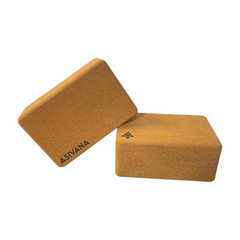Prithvi (Earth)
Jack UtermoehlShare
Prithvi is a Sanskrit term meaning "earth" and represents the densest and most grounding of the five great elements (pancha mahabhutas).
It symbolizes stability, structure, support, and the physical world. In both yogic and Ayurvedic philosophy, Prithvi is the element of rootedness and endurance—governing bones, muscles, and the sense of smell.
It is the foundation upon which all other elements build and where transformation takes root.
Etymology and Meaning
Sanskrit Spelling: पृथ्वी
Root Word: "Prithvi" (broad, vast, expansive)
Translation Variations: Earth, ground, land, soil, physicality
Pronunciation: Pṛthvī [PRITH-vee]
Prithvi is the anchor of embodiment—steady, supportive, and dependable. It gives form to spirit and structure to experience.
Prithvi in Yogic and Ayurvedic Philosophy
Prithvi governs form, nourishment, and grounded presence:
- In Ayurveda: Earth is one of the two elements that form Kapha dosha, influencing physical structure, immunity, and stamina.
- In Yoga: Prithvi is connected to the root chakra (muladhara), associated with stability, survival, and belonging.
- In Ritual and Tantra: Offerings are made to the earth to honor the maternal force of grounding and sustenance.
Symbolism and Elements
- Color: Deep green or brown, reflecting nature, grounding, and fertility
- Element: Earth—solid, stable, foundational
- Mantra: Lam, the bija (seed) sound of the root chakra
- Mudra: Prithvi Mudra, a hand gesture that enhances grounding, stability, and nourishment
Yoga Essentials for Your Practice
Support your yoga journey with high-quality, sustainable props designed for comfort and stability.

Crafted from eco-friendly cork for durability and a comfortable practice.
$24
Shop Now
Includes everything you need to get started: a mat, blocks, and a yoga strap.
$120
Shop NowPractical Application
In Yoga Practice
- Include grounding poses such as Mountain Pose (Tadasana), Warrior I (Virabhadrasana I), and Child’s Pose (Balasana)
- Focus on slow, steady breath and mindful transitions to embody stillness and strength
- Use floor-based practices like Yin Yoga or Restorative Yoga to deepen into earth connection
In Daily Life
- Walk barefoot on natural ground to connect physically with the earth
- Eat root vegetables and whole foods that are grounding and nourishing
- Create routines and rituals that support structure, steadiness, and simplicity
Quotes and Wisdom
"The earth does not hurry, yet everything is accomplished." — Lao Tzu
"Stillness is not the absence of movement but the presence of grounding."
Modern Relevance
In a culture of constant motion and overstimulation, the earth element reminds us to slow down, stabilize, and return to our roots.
Prithvi invites us to reconnect with our bodies, our breath, and the present moment. It offers a reliable container for growth, healing, and presence—especially in times of uncertainty or change.
Related Concepts
Muladhara Chakra: The root chakra, which governs our relationship to safety, stability, and the physical body
Kapha: The dosha composed of earth and water, representing structure and cohesion
Seva: Service grounded in humility and steadiness, embodying earth-like generosity
How to Work with Prithvi
Mindset: Embrace simplicity, consistency, and being fully embodied
Actions: Move slowly, eat mindfully, honor rest and routine
Reflection: Ask, “What grounds me? What supports my sense of stability and trust?”
Suggested Reading
- The Four Elements by John O’Donohue
- Yoga and Ayurveda by Dr. David Frawley
- The Heart of Yoga by T.K.V. Desikachar
Conclusion
Prithvi, the earth element, reminds us that strength begins with steadiness.
Through grounding practices, nourishing routines, and intentional stillness, we honor the sacred stability that holds us—and cultivate a life rooted in presence, trust, and wholeness.






